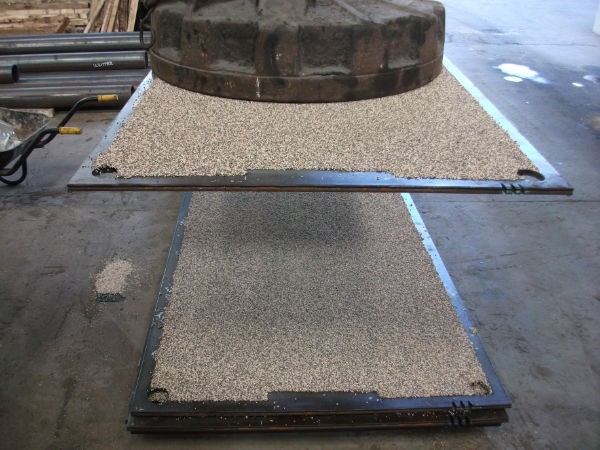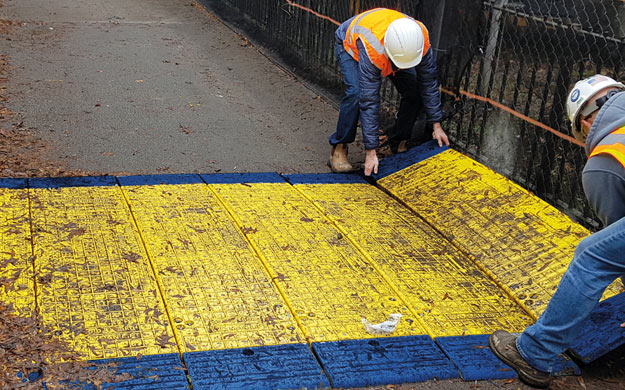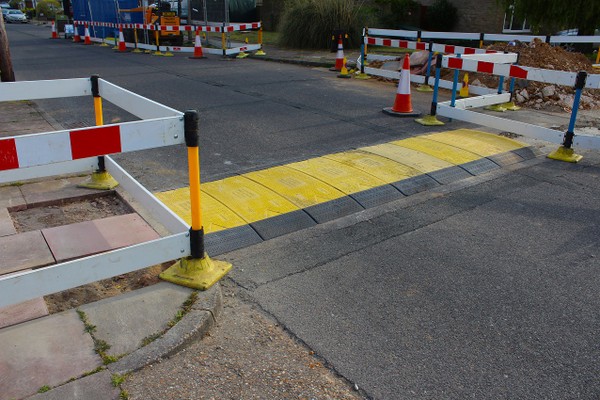Getting My Road Plates To Work
Wiki Article
Not known Facts About Steel Road Plate
Table of ContentsSteel Road Plate Fundamentals ExplainedSome Known Factual Statements About Steel Road Plates The Facts About Steel Road Plates UncoveredThe Ultimate Guide To Road Plates
Box culverts are affordable as a result of their strength and monolithic activity and also separate structures are not called for. It is used in unique cases, weak foundation. An arch culvert is comprised of steel, rock masonry, concrete, RCC etc. Building does not take a lot of time as well as unlike box culvert, water diversion is not required, as it can be set up without disturbing the water present.Normal compaction demands for a job might vary from 90% to 95% of typical Proctor for non-structural locations to 98% or even more of changed Proctor for greatly crammed sidewalks. Proctor examinations are dirt moisture-density partnership examinations that develop optimum dry thickness (the unit weight of the soil minus the weight of water) and the maximum water web content for soil examples.
Water is contributed to four to 6 sections of the dried out dirt sample in boosting amounts. Each ready section is consolidated into a compaction (proctor) mold and mildew with a Proctor Hammer or Mechanical Soil Compactor and then is evaluated and dealt with for wetness web content. The dry density enhances as the included moisture lubricate the dirt particles as well as make it possible for greater compaction from the exact same applied energy.

A Biased View of Steel Road Plate
Density and also moisture results are plotted against the initial research laboratory curve to verify a suit. In scenarios where laboratory info is not readily available, the field point outcomes might be compared to a family of curves compiled from neighborhood or local dirt data to select the best optimum density and maximum dampness contour.A dirt compaction examination makes use of one of several methods to determine the dry density as well as wetness web content of the dirt in location. The 3 most usual are gone over here - steel road plate. Results from these area examinations are compared to the Proctor test results of the exact same dirt established in the research laboratory and also the ratio is shared as the percent compaction.
All the dug deep into material is very carefully collected as well as saved in an impermeable container.
Afterward, the here are the findings partially filled up apparatus is weighed once more, and also the volume of the examination hole is calculated by dividing the mass of the sand loading the opening by the bulk thickness of the sand. The wet weight of the recovered dug deep into dirt is separated by the examination hole quantity to figure out the wet thickness.
An Unbiased View of Steel Road Plates
The percent compaction for the area density examination is calculated by splitting the dry density of the soil by the optimum dry thickness from the proctor test. Pros, Cons, Accurate and also trustworthy; a long background of accepted use, Tests may take thirty minutes or more to complete, ASTM typical test approach, Heavy equipment in the location might need to stop procedure briefly, Does not need extensive training, Alternative examinations need to be used where muches of +1 - road plate steel.
The examinations are a little bit simpler to carry out than the sand cone and also can be repeated swiftly because the water is maintained in the vessel. Pros, Cons, Accurate and also trustworthy; a long history of approved usage, Tests may take 15-20 minutes or more to complete, ASTM typical test technique, Balloon membrane layers can penetrate throughout screening, Does not require considerable training, Intended for fine-grained or granular dirts without appreciable quantities of rugged material, No licensing or allowing needed for use, Need to not be made use of to evaluate soft saturated, highly plastic dirts, Multiple tests can be executed without changing density media, All dug deep into product should be very carefully removed, Tools is economical Dampness material and also unit weight have to be carried out on kept soil samples look at more info from either a sand cone or rubber balloon examinations to finish computations for dirt compaction.
The chart below programs a couple of various techniques that can be utilized for moisture Visit This Link resolutions and also there are a selection of scales and also equilibriums that can be utilized for weighing soil samples in laboratory or area settings. Nuclear density evaluates identify soil thickness by measuring gamma radiation transmission between a probe including a radioactive Cesium 137 (or other) source as well as Geiger-Mueller detection sensors in the base of the scale.
What Does Road Plate Steel Mean?
Dirt dampness is gauged at the very same time making use of a different source of Americium 241. A steel rod is driven into the soil at the test site, developing a pilot opening. The probe having the radioactive source is reduced up to 12in (305mm) right into the pilot hole, and radiation transmission is measured for one minute.
Report this wiki page